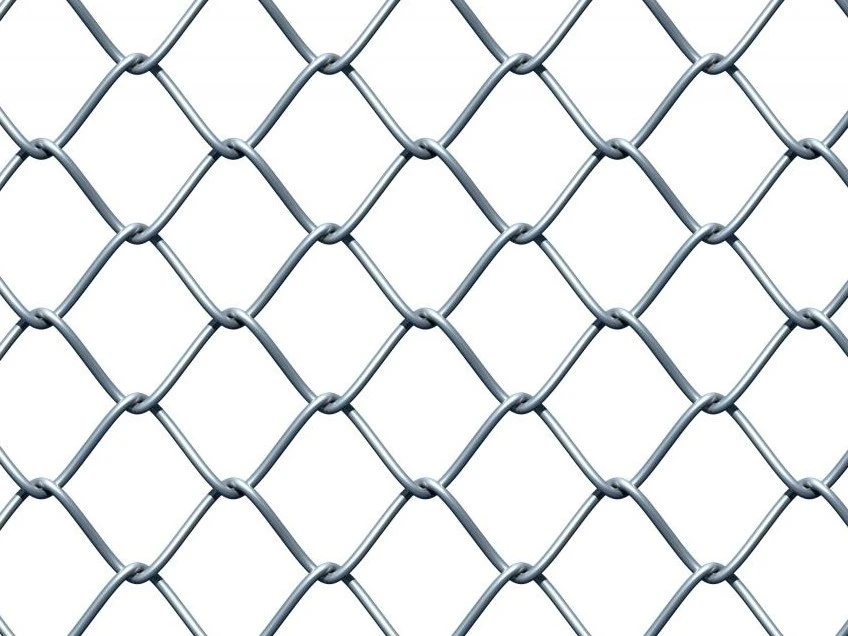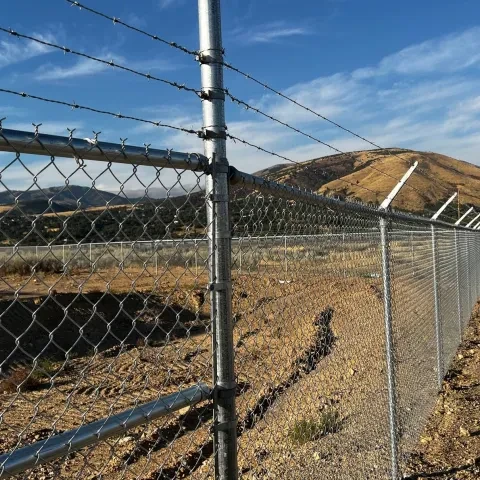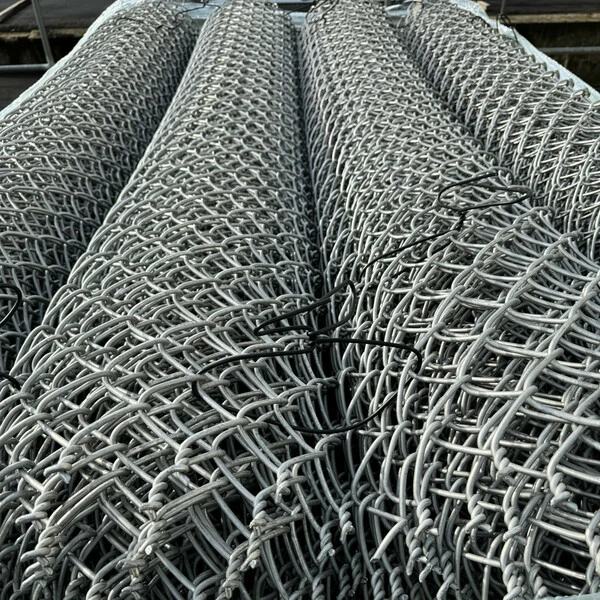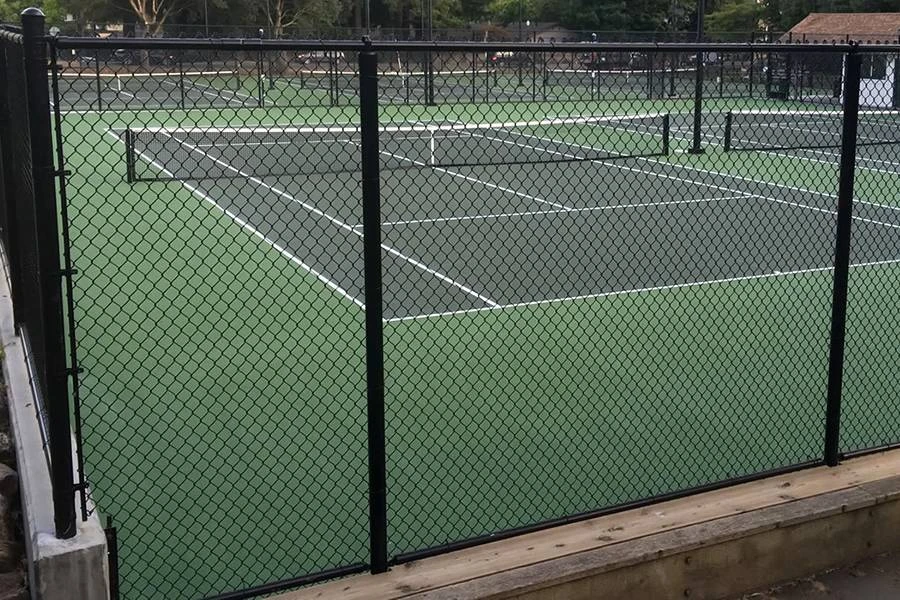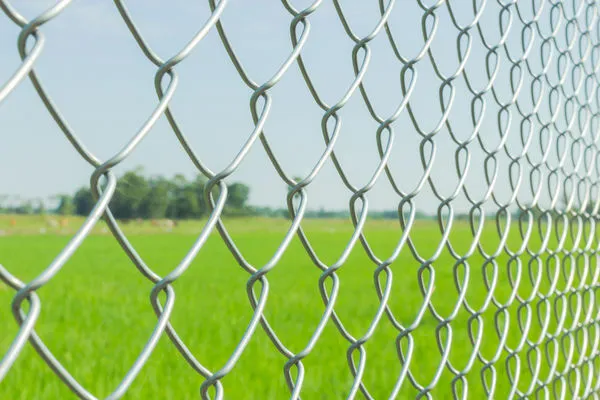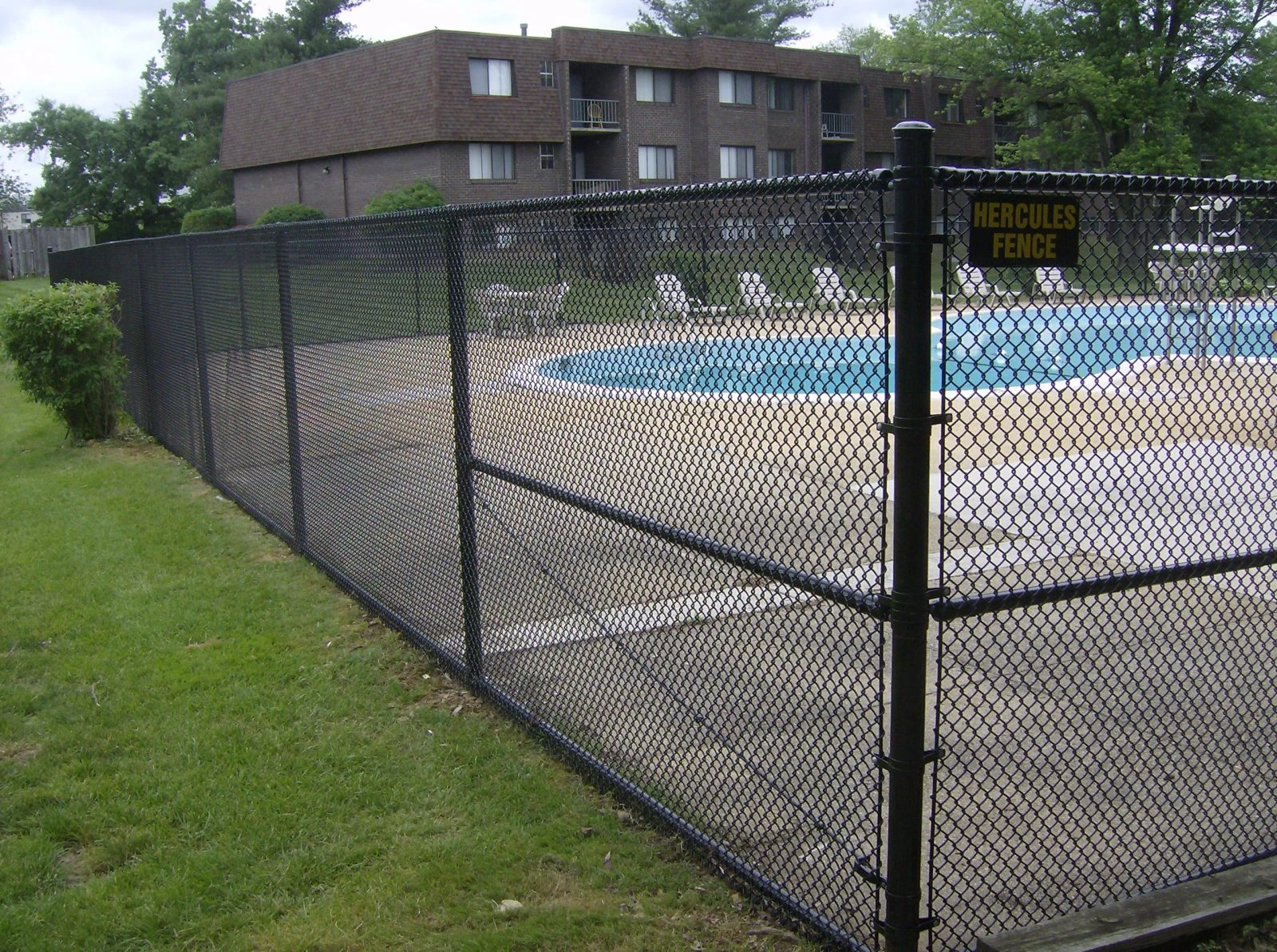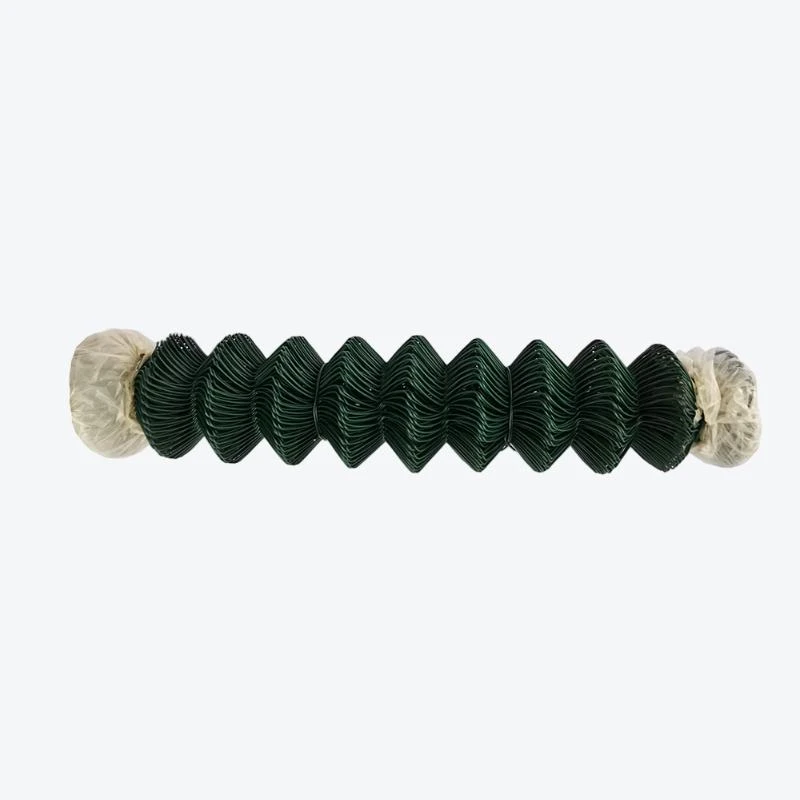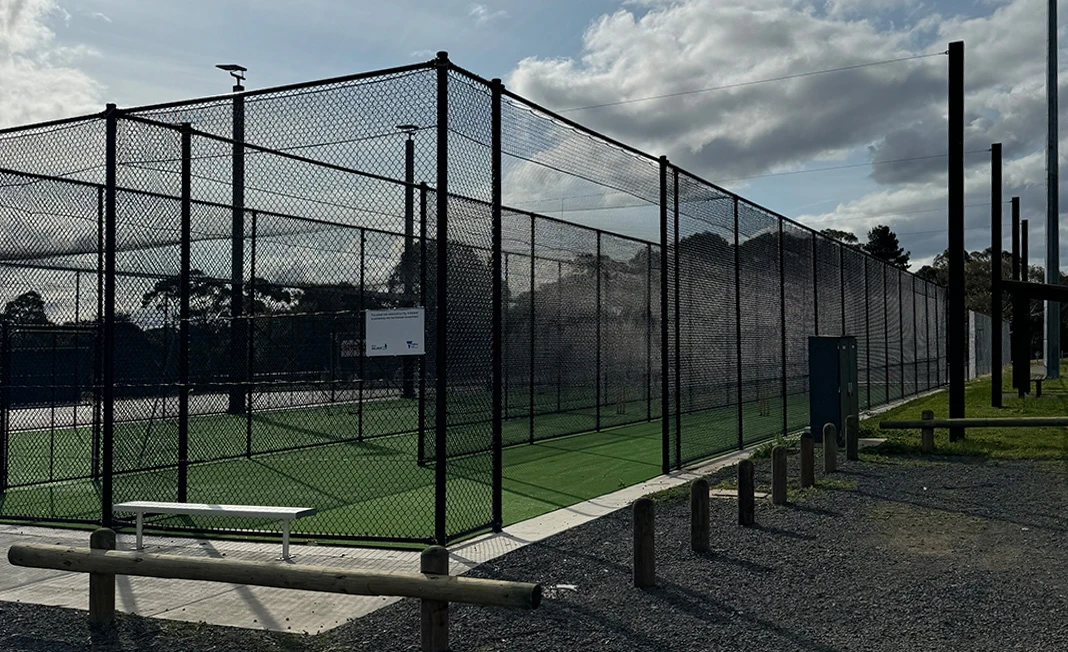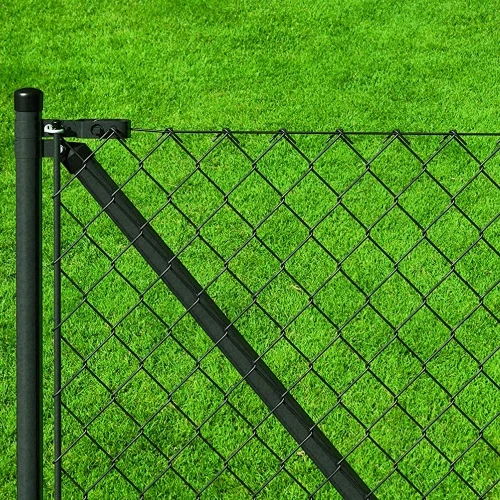Chain link fencing is a popular choice for residential, commercial, and industrial applications due to its numerous advantages. First, it is highly affordable. Compared to other fencing materials such as wrought iron, aluminum, or wood, chain link fencing is very cost-effective in both material and installation, making it an ideal choice for large-scale fencing projects with budget constraints. Secondly, chain link fencing is incredibly durable. Made from galvanized steel or coated with vinyl, it is highly resistant to rust, corrosion, and extreme weather conditions. Unlike wood, which can rot or warp, or iron, which is prone to rust, chain link fences require minimal maintenance and can last for decades. Its sturdy steel structure also makes it resistant to impact and external damage.
Security is another major advantage of chain link fencing. While it may not offer the same level of security as palisade fencing or concrete walls, it still provides effective protection against trespassers and unauthorized access. The open design of chain link fencing offers good visibility, making it easier for property owners and security personnel to monitor activity on both sides of the fence, making it especially suitable for businesses, schools, and industrial sites. Additionally, chain link fencing is highly versatile. It comes in various heights, gauges, and coatings, and can be customized to meet different security needs. Some installations even include barbed wire or privacy slats to enhance security and privacy.
The installation of chain link fencing is also straightforward, as it requires fewer materials and labor compared to other types of fences. This allows for quick installation, even on large properties. Furthermore, chain link fencing is low maintenance. Unlike wood, which requires staining and sealing, or iron, which needs to be repainted periodically, chain link fences only need occasional cleaning to maintain their appearance. The galvanized or vinyl-coated finish protects them from rust and environmental damage, ensuring longevity with minimal upkeep.
Chain link fencing is also suitable for both temporary and permanent enclosures. It is commonly used for construction sites, sports fields, and event venues as temporary fencing and can be easily removed or relocated when needed. It is also ideal for pet and livestock enclosures, providing a secure area for animals without obstructing airflow or visibility. Overall, chain link fencing is an excellent choice for a wide range of applications due to its affordability, durability, security, versatility, low maintenance, and ease of installation.
Where Is Chain Link Fencing Commonly Used?
Chain link fencing is commonly used in various applications due to its affordability, durability, and ease of installation. One of the most frequent uses is for residential properties. Homeowners install chain link fences to enclose yards, providing a safe space for children and pets while keeping unwanted visitors out. Unlike wooden fences, which can block visibility, chain link fences allow homeowners to monitor activity beyond their property while still maintaining a clear boundary. Another common application is commercial and industrial security. Businesses, warehouses, factories, and storage facilities use chain link fencing to secure perimeters and prevent unauthorized access. Many commercial properties enhance security by adding barbed wire or razor wire on top of the fence, making it more difficult for intruders to climb over. The open design of chain link fences also makes it easier for security personnel and surveillance cameras to monitor the area. Chain link fencing is widely used in schools and playgrounds. Schools install these fences around playgrounds, sports fields, and school perimeters to keep children safe and prevent unauthorized individuals from entering. Chain link fencing provides a secure yet open environment, allowing teachers and staff to monitor students easily. Sports and recreational areas also benefit from chain link fencing. Baseball fields, tennis courts, basketball courts, and soccer fields frequently use chain link fences to separate playing areas and prevent balls from leaving the field. These fences are also used to create dugouts and spectator enclosures, ensuring safety for both players and audiences. Another important application is in transportation and infrastructure security. Airports, railway stations, highways, and bridges often use chain link fencing to control access and prevent trespassing. These fences help protect restricted areas, ensuring the safety and efficiency of transportation networks. Construction sites also utilize chain link fencing as a temporary security measure. These fences help keep unauthorized individuals out of hazardous areas while protecting equipment and materials from theft or vandalism. Temporary chain link fences can be easily installed and removed, making them a practical choice for short-term projects. Additionally, chain link fencing is used for agricultural and livestock enclosures. Farmers use these fences to secure cattle, horses, and other animals, preventing them from wandering off while keeping predators out. The durability of chain link fencing makes it a reliable choice for farms and ranches. Prisons and detention centers also use chain link fencing, often reinforced with additional security features like electrified wires or double layers, to prevent escapes and unauthorized entry. Lastly, event organizers and municipalities use chain link fencing for crowd control during concerts, festivals, and public gatherings. These fences help guide pedestrian movement and keep restricted areas separate from public spaces. In conclusion, chain link fencing is widely used in residential properties, commercial security, schools, sports facilities, transportation infrastructure, construction sites, agriculture, prisons, and event management due to its affordability, durability, and effectiveness in providing security and control.
How Does Chain Link Fencing Compare to Other Types of Fencing?
Chain link fencing has several advantages and disadvantages when compared to other types of fencing, including wood, vinyl, aluminum, wrought iron, and palisade fencing. One of the most significant benefits of chain link fencing over wood fencing is durability. Wood fences require regular maintenance, including staining, sealing, and repairs due to rotting, warping, and insect damage. In contrast, chain link fences are made from galvanized or coated steel, making them resistant to rust, weather damage, and pests. Chain link fences also cost less than wood fences and are quicker to install. However, wood fences offer more privacy, as they provide a solid barrier, while chain link fences are more open and visible. When compared to vinyl fencing, chain link fencing is more cost-effective and easier to install. Vinyl fences require a higher initial investment, and while they are low maintenance, they can crack or fade over time due to prolonged sun exposure. Chain link fencing, on the other hand, is highly durable and can withstand extreme weather conditions with minimal upkeep. However, vinyl fences provide better privacy and come in various styles and colors that offer a more decorative appearance. Compared to aluminum fencing, chain link fences are more affordable and require less maintenance. Aluminum fences are rust-resistant and offer an elegant, ornamental look, making them a better choice for upscale properties. However, aluminum fencing is not as strong as chain link fencing and may not be suitable for high-security applications. In terms of security, chain link fencing is not as strong as palisade fencing or wrought iron fencing. Palisade fences have vertical steel pales with pointed tops, making them more difficult to climb and break through. Wrought iron fences also provide superior strength and security, but they are significantly more expensive and require regular maintenance to prevent rust. Chain link fences provide basic security but can be enhanced with barbed wire or privacy slats for improved protection. Concrete walls offer the highest level of security and privacy, but they are costly, require more space, and can create security blind spots due to their solid structure. Unlike concrete, chain link fences allow for clear visibility and airflow while still marking property boundaries. Overall, chain link fencing is a practical and cost-effective option for many applications. While it may not offer the same level of security or aesthetic appeal as other fencing types, its affordability, durability, ease of installation, and versatility make it a popular choice for residential, commercial, and industrial properties.


